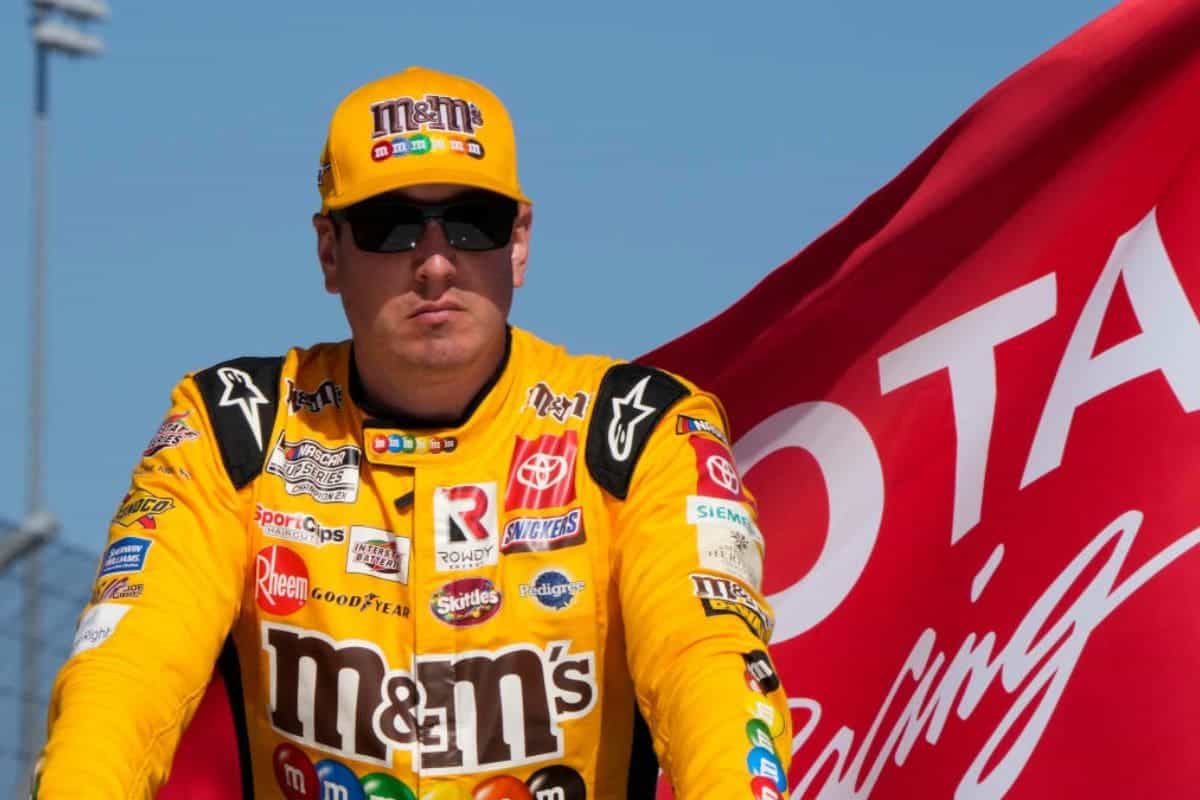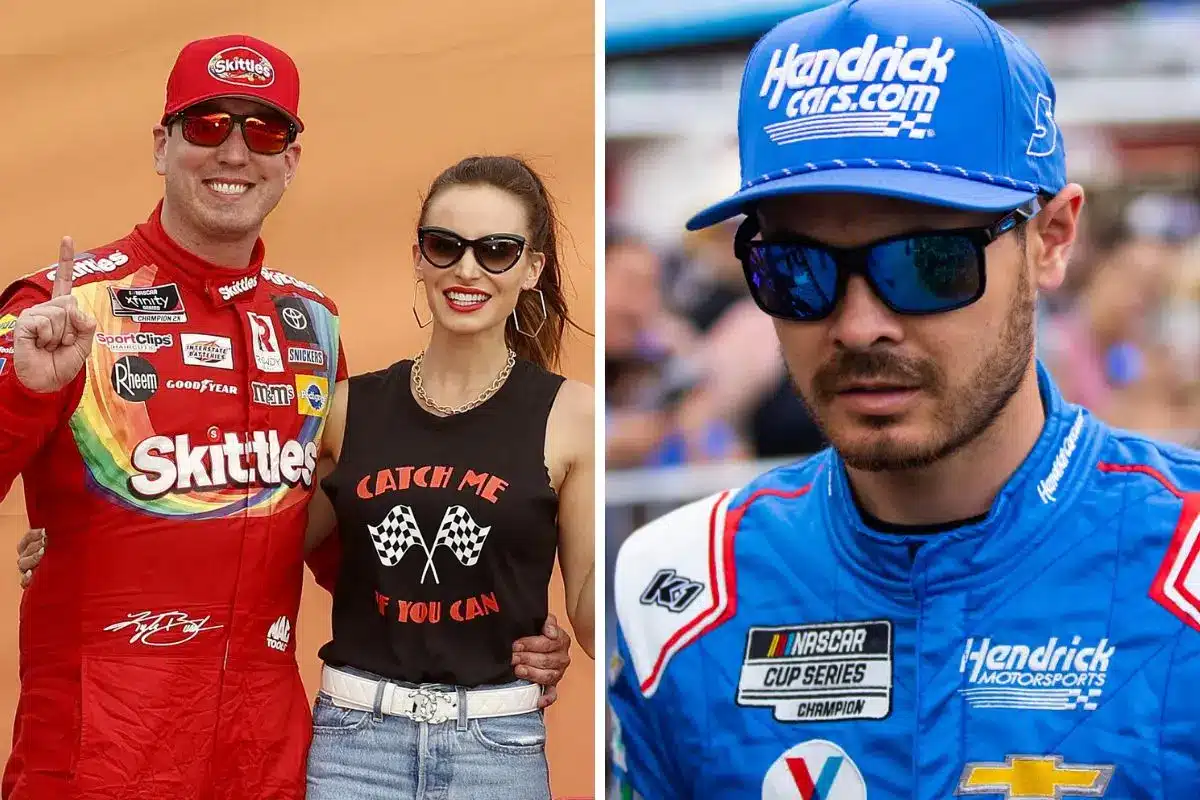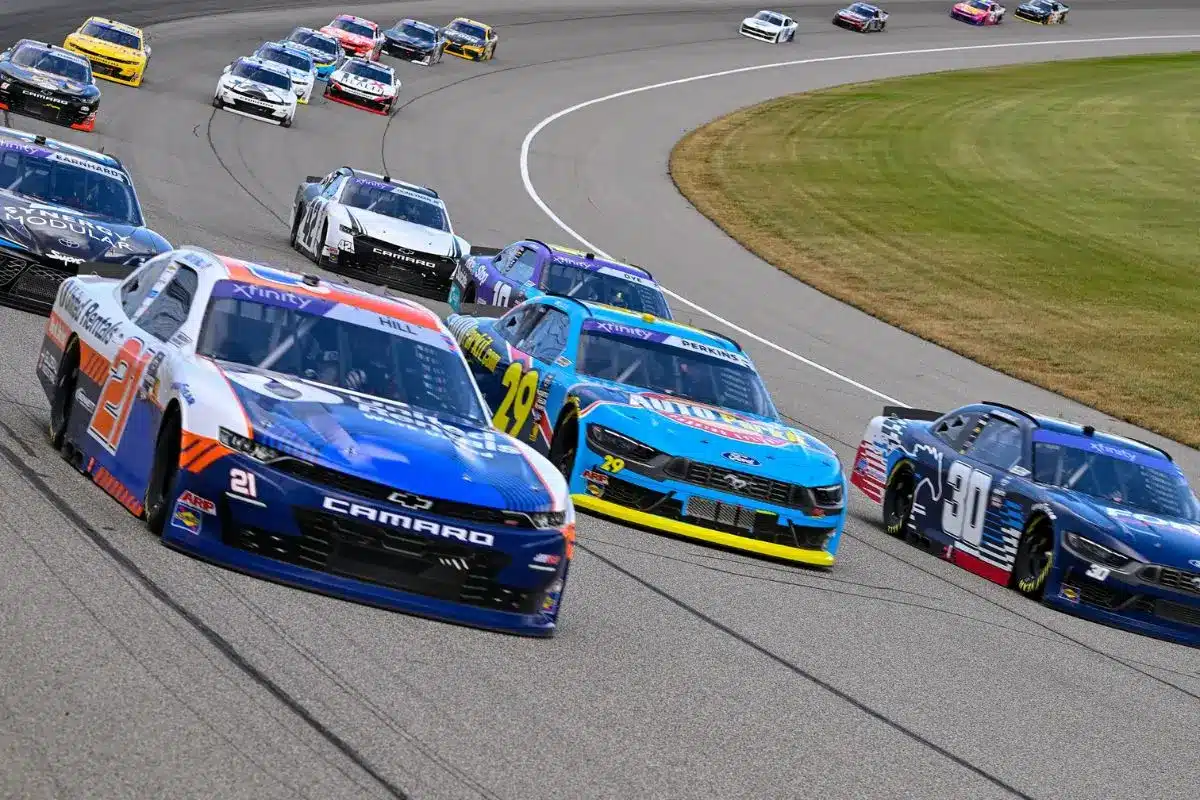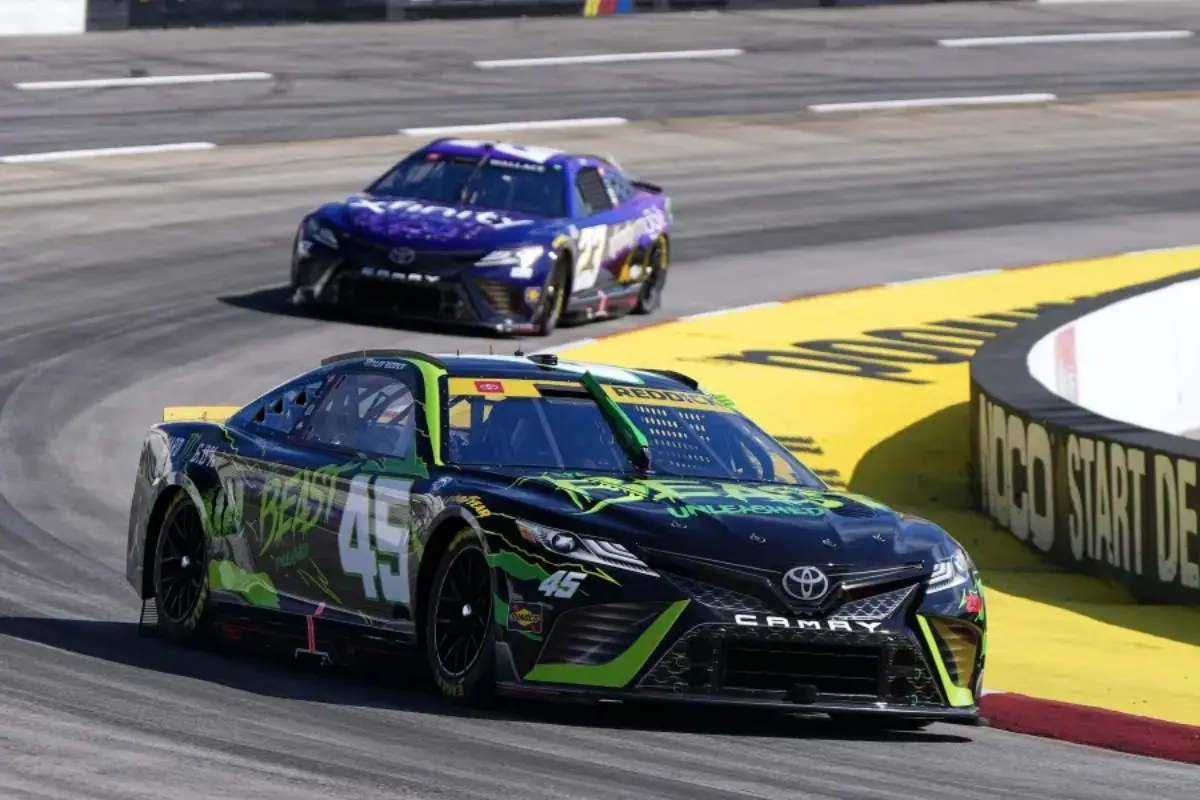Samantha Busch’s Brutal Take on Bristol: Samantha Busch’s recent comments about the Bristol race provide a critical view of NASCAR today. She points out how established drivers like Kyle Larson can overshadow new talent, including his son. This raises concerns that personal recognition is becoming more important than competition, leading us to rethink what makes someone a star in racing. As NASCAR tries to keep excitement at short tracks, Busch’s critique could be an important moment for both tradition and new ideas in the sport. What does this mean for the future stars of NASCAR?
Key Highlights
- Samantha Busch criticized the Bristol race for its lack of excitement and memorable moments, overshadowing individual performances.
- She highlighted the disconnect between expected thrills and the actual racing experience during the Bristol event.
- Kyle Larson’s dominating performance raised concerns about monotony, prompting questions about the future of competitive racing.
- Emerging talent, including Kyle Larson’s son, is seen as a potential beacon for NASCAR’s future amid current performance struggles.
- The focus on family legacies in racing underscores the importance of nurturing new stars to engage audiences effectively.
Contrast Between Spring and Fall Races at Bristol
The contrast between the spring and fall races at Bristol Motor Speedway shows the unpredictable nature of NASCAR and raises crucial questions about the sport’s evolving dynamics. The spring race was characterized by excessive tire wear, presenting a formidable challenge that put teams to the test. In clear contrast, the fall race unfolded with minimal tire degradation, allowing drivers to engage in extended green flag runs. This contrast not only shows the variability inherent in racing conditions but also emphasizes how these fluctuations can dramatically alter the competitive landscape.
Kyle Larson’s dominant performance, leading 462 of 500 laps, highlights the potential for a race to become monotonous when one driver holds such a commanding lead. While this achievement speaks volumes about the skill and preparation of Larson and the #5 team, it raises critical concerns regarding the complete excitement and unpredictability that fans expect from NASCAR.
The lack of tire wear resulted in a race that, despite its numerical impressiveness, lacked the covering battles and tactical intricacies that typically characterize Bristol’s storied short-track races.
Furthermore, this pattern prompts a deeper analysis of the implications for race strategy, engineering, and fan engagement. As teams adapt to these variable conditions, the question remains: how can NASCAR guarantee that each race retains its competitive spirit and offers fans the thrilling experiences they crave?
Samantha Busch’s Critique of the Race
Samantha Busch’s critique of the Bass Pro Shops Night Race provides an insightful lens through which to examine the broader implications of the race’s disappointing excitement. Her frank assessment highlights the disconnection between the anticipated thrill of a night race at Bristol and the reality that unfolded on the track.
As she noted on social media, the only memorable moment was her son Owen celebrating with Kyle, emphasizing a sentiment of disappointment that reverberated through the fanbase.
Not just saying this bc we didn’t run well but can we all agree the only exciting part of the race was watching Owen celebrate w Kyle. Can’t remember a Bristol race being that blah in long time. Time to cancel this race car.
— Samantha Busch (@SamanthaBusch) September 22, 2024
The choice to utilize PJ1 instead of resin on the racing surface resulted in minimal tire degradation, effectively neutralizing the tactical elements that typically define Bristol races. This alteration led to a scenario where drivers primarily focused on maintaining track position, rather than engaging in the dynamic racing battles expected from such a prestigious event.
The absence of compelling action rendered the race a monotonous experience for viewers, even insiders, who rely on excitement to validate their investment in the sport.
Moreover, Busch’s call to “cancel this race car” reflects a broader concern regarding the Next Gen vehicle‘s impact on competition. As the sport evolves, it is imperative that the excitement of racing does not diminish.
“Not just saying this bc we didn’t run well, but can we all agree the only exciting part of the race was watching Owen celebrate w Kyle. Can’t remember a Bristol race being that blah in long time. Time to cancel this race car.”-(SAMANTHA BUSCH)
The contrast of fan expectations against the reality of the race experience elucidates a critical dialogue about the future of NASCAR and the necessity for innovation that fosters thrilling competition.
Kyle Busch’s Struggles at Bristol
Kyle Busch’s recent performance at Bristol serves as a clear reminder of the challenges he faces in maintaining his competitive edge in a rapidly evolving NASCAR landscape. Following a streak of four consecutive top-10 finishes, Busch’s disappointing 25th-place result at Bristol raises urgent questions about his adaptability and resilience in a sport that increasingly rewards innovation and strategy.
This season, Busch’s struggles have been particularly pronounced at short tracks, a venue where he has historically excelled. His inability to capitalize on prior momentum is alarming, especially with only seven races left in the season. The threat of ending his remarkable 20-year win streak in NASCAR adds an extra layer of urgency to his performance, pushing him to confront not only his own limitations but also the broader challenges posed by the current racing package.
Furthermore, the continued dissatisfaction with NASCAR’s short-track configuration has compounded Busch’s woes. Despite considerable experimentation and fanfare surrounding improvements, the results have not translated into improved competitiveness. As the sport grapples with the need for change, Busch’s situation demonstrates the friction between veteran experience and the necessity for adaptation.

NASCAR’s Efforts to Improve Short-Track Racing
Short-track racing in NASCAR has long been a focal point of excitement and competition, yet recent seasons have highlighted a persistent struggle to improve the quality of these events. Despite NASCAR’s concerted efforts to amplify the spectacle of short-track racing, many initiatives have fallen short of expectations. Following an uninspiring Martinsville race, NASCAR senior vice president of competition Elton Sawyer openly acknowledged the need for continued collaboration with tire supplier Goodyear, emphasizing that hard work remains paramount.
“I promise you we are working as hard as we can with Goodyear, and we need to work harder. That’s the bottom line.” – Sawyer
The Bristol spring race offered a hope, showcasing the potential benefits of excessive tire wear, which contributed to an engaging race. However, this success was not easily replicated. NASCAR’s introduction of a softer tire compound at the All-Star race aimed to mimic Bristol’s tire degradation but was overshadowed by off-track incidents, such as the brawl between Kyle Busch and Ricky Stenhouse Jr. This incident highlighted the challenges NASCAR faces in creating an entertaining race environment.
NASCAR’s repeated attempts to revitalize short-track racing, including the testing of new tires at North Wilkesboro, have often led to disappointment. The return to Bristol saw similar outcomes, as the anticipated excitement failed to materialize.
Future Considerations for NASCAR
As NASCAR navigates the complexities of revitalizing its racing series, critical decisions loom on the horizon regarding the Next Gen car‘s performance parameters. Stakeholders are increasingly vocal about their desire for more horsepower, arguing that improved engine output could reinvigorate the competition and fan engagement.
However, this proposition is not without its challenges, as it necessitates a delicate balance between speed, safety, and the comprehensive integrity of the sport.
On the other hand, NASCAR is also considering the introduction of a new tire compound, aiming to solve performance discrepancies observed on short tracks. This approach highlights the organization’s commitment to innovation and adaptability in a rapidly changing motorsport landscape.
The potential efficacy of new tire technology juxtaposed with the call for increased horsepower presents a complex dilemma—one that could redefine the tactical dynamics of racing.
As NASCAR seeks to harness the collective insights from drivers, teams, and sponsors, it must remain vigilant to the evolving expectations of its audience. The path forward demands a thoughtful examination of how to blend tradition with innovation, ensuring that NASCAR remains a premier destination for racing enthusiasts while fostering a new generation of talent and excitement.
News in Brief: Samantha Busch’s Brutal Take on Bristol
ALSO READ: Samantha Busch’s Epic Coat Prank on Kyle Busch: Fans Can’t Stop Laughing



